

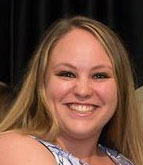
Maddie Harman
Each year MIP faculty choose an outstanding graduating senior that has left the greatest mark on the Department, through service, participation, academics or encouraging comradery. This is always a difficult decision, and this semester is no exception. We are pleased to announce that Maddie Harman was chosen this year based on her excellence in coursework while (1) performing research on prion diseases, (2) completing an Honors thesis in the Telling lab under the guidance of Julie Moreno and (3) volunteering at both Poudre Valley Hospital and Pathways Hospice. Her Honor’s thesis is entitled "Do spontaneously sick transgenic (Deer and Elk PrP) mice die from accumulation of infections prions (PrPSc) or by some other mechanism?” Maddie’s work resulted in a poster presentation at CSU’s Celebrate Undergraduate Research and Creativity Symposium and was chosen from more than 130 presentations to receive a High Honors award. To quote Julie Moreno, “Maddie is one of the brightest undergraduate students I have ever mentored in the laboratory. When she had her Honors Thesis presentation, she understood and presented her research as well as, if not better than, a first or second year graduate student. She is really a great student in the laboratory while balancing classes, volunteering, and life.”
Congratulations Maddie!
For He’s a Jolly Good (NAI) Fellow
Congratulations are in order for Ed Hoover who will be inducted as a Fellow of the National Academy of Inventors in April. We note that Ed’s middle initial is ‘A’. We’re not sure but that ‘A’ might stand for ‘Alva’……”

CONGRATULATIONS Ed!
Welcome Ray Goodrich, Ph.D, Executive Director IDRC
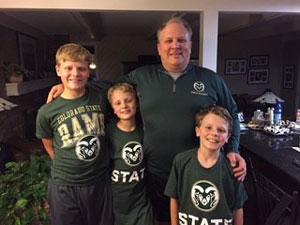
Dr. Goodrich is the Executive Director of the IDRC and formerly served as Vice President of Scientific and Clinical Affairs and Chief Scientific Officer, Blood Bank Technologies, for Terumo BCT, a leading global medical device manufacturer based in the United States. His responsibilities included oversight of research and development programs in the field of blood product processing and blood safety. He has worked in medical research for over 29 years during which he has managed research staff and development programs in the fields of transfusion and transplantation medicine and pathogen reduction technologies. He has been awarded over 50 patents covering technology in these areas and has co-authored over 200 peer reviewed articles and abstracts. He has also served as the Principal Investigator for grants totaling over $40M from the United States Department of Defense (Congressionally Designated Medical Research Program) for the development of a transportable blood treatment system.
He is an active member of several professional organizations including the American Chemical Society, the American Association of Blood Banks and the International Society of Blood Transfusion. He has served on the Working Party on Transfusion Transmitted Diseases for the International Society of Blood Transfusion and the Working Party on Transfusion Transmissible Diseases of the American Association of Blood Banks. He has also served as a member of the Medical Device Innovation Consortium (MDIC), an organization bringing together regulatory authorities and clinical and scientific experts in the United States to advance the field of regulatory science and enhance innovation in the medical device industry in The United States. Dr. Goodrich has also held a position as an Adjunct Professor of Chemistry at The Ohio State University since 2005.
Meet Debra Horensky, MD, Associate Director, Infectious Diseases Research Center and RBL Director

Dr. Debra Horensky is the Associate Director of the Infectious Diseases Research Center and the NIAID RBL Director. As a board certified Clinical Pathologist with emphasis in infectious disease, she came to Fort Collins over 7 years ago with her family. Her expertise in emerging infections and federal regulatory compliance is important to the IDRC compliance environment and her regulatory experience includes CDC Select Agent, EPA, FDA and CLIA having worked in the research and clinical venues of academia, private sector, clinical hospital, and public health laboratories. Prior to coming to Fort Collins, she served as the Chief of Biological Sciences at the NM State Laboratory for over 11 years overseeing the public health biological health labs in microbiology/virology, tb/mycology, environmental, molecular CDC LRN (laboratory emergency response network), for both human and veterinary clinical testing. In addition as a former CDC fellow in emerging infectious disease she continues to work on CDC initiatives through the Emerging Infectious Pathogens, Epidemiology and Lab Capacity, and the Public Health Preparedness programs and she was the CLIA consultant to the 50 public health state wide clinical laboratories. Service work includes participation on CSU’s President’s Commission on Women and Gender Equity, Occupational Health Committee, BSL3 Advisory Committee and is a leadership coach for the Regional Institute for Health and Environmental Leadership and is an adjunct faculty member in MIP.
In her free time she enjoys spending time with her family and traveling with her 2 daughters wherever travelzoo may take them, and hiking and x-country skiing in the Colorado mountains with their dog Cookie.

CSU Graduate Student Showcase Awards
CVMBS Top Scholar:
| Mike Mangalea |
| David Markman |
Great Minds in Research Honorable Mention:
| Albert Jeon |
Congrats to all!
Check out an article about the graduate student showcase here

![]() MIP Graduate Students who received their PhD Degrees on December 16th...
MIP Graduate Students who received their PhD Degrees on December 16th...
| Bryna Fitzgerald |
| Jonathan LeCureux |
| Luisa Nieto Ramirez |
| Elijah Edmondson |
| Clare Hoover |
| Greg Wilkerson |
![]() MIP Graduate Students who received their MS Degrees on December 16th...
MIP Graduate Students who received their MS Degrees on December 16th...
| Phillip Knabenbauer |
| David Markman |
![]() MIP Undergraduate Students who received their Degrees on December 17th...
MIP Undergraduate Students who received their Degrees on December 17th...
| Seth Bauer-Martinez |
| Ashley Cotter |
| Justin Cousins |
| James Dilisio |
| Luke Draper |
| Kala Early |
| Mahmoud Elkady |
| Paige Handgen |
| Madison Harman |
| Nathan Heberlein |
| Oliver Jenkins |
| Hannah Kitting |
| Tin Ya Lin |
| Rebecca Mackay |
| Sarah Nelson |
| Caitlyn Pearson |
| Jo Beth Plauche |
| Lee Thurlow |
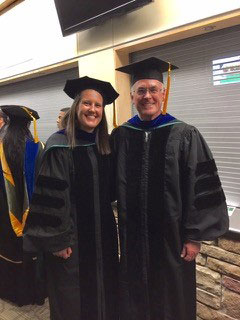
Congratulations to Dr. Bryna Fitzgerald, PhD!
Will Brian Foy and Kevin K. get nominated as best supporting actors?

Check out a fun and very informative video on Zika virus made by PBS here: https://www.youtube.com/watch?v=_yFPgaFJtRM

Emergence and spread of a human transmissible multidrug-resistant nontuberculous mycobacterium
Josephine Bryant……Deepshika Verma, Emily Hill,…………Diane Ordway, Julian Parkhill and R. Andres Floto
(81 total authors)
Science Vol 354: 751-757 (Nov. 11, 2016)
Every time we take a shower we are literally immersing ourselves in a virtual downpour of non-turberculosis mycobacterial (NTM) species that are common in the environment and love to colonize the showerheads in our bathrooms. Before you decide to not to shower for the rest of your life, please be advised that these mycobacteria are largely benign and are only opportunistic pathogens. However if you have a preexisting inflammatory lung disease like cystic fibrosis, these mycobacteria – in particular M. abscessus (M. ab) - represents a major problem. To make matters worse, M. ab is naturally resistant to many common antibiotics, making it as difficult to defend as the Duke basketball team. Thus understanding the relationship between M. ab and CF patients is a vital area of research.
In this study, the Ordway lab and 78 of their professional friends used the power of population level genomics to uncover a few rather startling observations regarding M. ab in CF patients. The group sequenced 1080 clinical M. ab isolates from 517 patients and crunched the data. The sequenced isolates nicely sorted into three divergent subspecies (rather than two as some folks suggest). Most importantly, worldwide CF patients are much more likely to be infected with a ‘clustered isolate’ rather than a random clone of M. ab. What this implies is clinically extremely significant: M. ab appears to have evolved from an innocuous environmental organism to a bona fide lung pathogen. The data suggest that key strains of M ab have emerged since ~1978 and are being specifically transmitted between CF patients through contact with fomites (i.e. doorknobs) or via the air. Why would a dominant clone of M. ab emerge in CF patients? The most likely reasons are that the dominant clone is either more infectious, more easily transmitted and/or more clinically virulent. Subjecting a panel of M. ab isolates to virulence assays showed some clear increaseS in pathogenic potential of the emerged strain, including increased uptake and survival in macrophages and higher bacterial burdens in SCID mouse models of infection. Curiously, similar M. ab isolates appear in CF patients around the globe, leading to the puzzle of how these emerged NTM got transmitted globally.
So why did we choose this paper as our coveted MIPublication of the Month® to close out 2016? First, the documentation of a clearly emerged handful of pathogenic isolates from a diverse population of environmental NTMs is simply fascinating. It illustrates the epidemiological power of sequence information/bioinformatics and how it can lead to calls for definitive changes in clinical disease management and prevention. Second, while there have been hints in the literature over the last couple of years from the team that M. ab could be transmitted from person-to-person, this study helps nail down that somewhat controversial finding. Third, the study illustrates the international impact of the MRL/Ordway lab as they played a key role in evaluating the pathogenic potential of key M. ab isolates. Finally, the paper in the particular issue of Science that follows this one is on the topic of why tickling induces laughter (seriously – check it out). After a tough and controversial last couple of months of 2016, we thought it best to remind/explain to everyone how to laugh (in case you’ve happened to forget…..)
Best wishes to all for a fantastic ‘17
 MIP Publications December 2016
MIP Publications December 2016
Lakin SM, Dean C, Noyes NR, Dettenwanger A, Ross AS, Doster E, Rovira P, Abdo Z, Jones KL, Ruiz J, Belk KE, Morley PS, Boucher C. MEGARes: an antimicrobial resistance database for high throughput sequencing. Nucleic Acids Res. 2016 Nov 28. pii: gkw1009.
McGuire A, Miedema K, Fauver JR, Rico A, Aboellail T, Quackenbush SL, Hawkinson A, Schountz T. Maporal Hantavirus Causes Mild Pathology in Deer Mice (Peromyscus maniculatus). Viruses. 2016 Oct 18;8(10). pii: E286.
Hu S, Neff CP, Kumar DM, Habu Y, Akkina SR, Seki T, Akkina R. A humanized mouse model for HIV-2 infection and efficacy testing of a single-pill triple-drug combination anti-retroviral therapy. Virology. 2016 Nov 29;501:115-118. doi: 10.1016/j.virol.2016.11.013.
Sharpe S, White A, Sarfas C, Sibley L, Gleeson F, McIntyre A, Basaraba R, Clark S, Hall G, Rayner E, Williams A, Marsh PD, Dennis M. Alternative BCG delivery strategies improve protection against Mycobacterium tuberculosis in non-human primates: Protection associated with mycobacterial antigen-specific CD4 effector memory T-cell populations. Tuberculosis (Edinb). 2016 Dec;101:174-190. doi: 10.1016/j.tube.2016.09.004.
Weger-Lucarelli J, Rückert C, Chotiwan N, Nguyen C, Garcia Luna SM, Fauver JR, Foy BD, Perera R, Black WC, Kading RC, Ebel GD. Vector Competence of American Mosquitoes for Three Strains of Zika Virus. PLoS Negl Trop Dis. 2016 Oct 26;10(10):e0005101. doi: 10.1371/journal.pntd.0005101.
Bosco-Lauth AM, Calvert AE, Root JJ, Gidlewski T, Bird BH, Bowen RA, Muehlenbachs A, Zaki SR, Brault AC. Vertebrate Host Susceptibility to Heartland Virus. Emerg Infect Dis. 2016 Dec;22(12):2070-2077.
Diaz G, Wolfe LM, Kruh-Garcia NA, Dobos KM. Changes in the Membrane-Associated Proteins of Exosomes Released from Human Macrophages after Mycobacterium tuberculosis Infection. Sci Rep. 2016 Nov 29;6:37975. doi: 10.1038/srep37975.
Nieto R LM, Mehaffy C, Creissen E, Troudt J, Troy A, Bielefeldt-Ohmann H, Burgos M, Izzo A, Dobos KM. Virulence of Mycobacterium tuberculosis after Acquisition of Isoniazid Resistance: Individual Nature of katG Mutants and the Possible Role of AhpC. PLoS One. 2016 Nov 28;11(11):e0166807. doi: 10.1371/journal.pone.0166807.
Zajic LB, Webb TL, Webb P, Coy JW, Dow SW, Quimby JM. Comparison of proliferative and immunomodulatory potential of adipose-derived mesenchymal stem cells from young and geriatric cats. J Feline Med Surg. 2016 Dec 2. pii: 1098612X16680703.
Chow L, Johnson V, Coy JW, Regan DP, Dow SW. Mechanisms of Immune Suppression Utilized by Canine Adipose and Bone Marrow-Derived Mesenchymal Stem Cells. Stem Cells Dev. 2016 Nov 23.
Wheat WH, Chow L, Kurihara JN, Regan DP, Coy JW, Webb TL, Dow SW. Suppression of Canine Dendritic Cell Activation/Maturation and Inflammatory Cytokine Release by Mesenchymal Stem Cells Occurs Via Multiple Distinct Biochemical Pathways. Stem Cells Dev. 2016 Nov 14.
Regan DP, Escaffi A, Coy J, Kurihara J, Dow SW. Role of monocyte recruitment in hemangiosarcoma metastasis in dogs. Vet Comp Oncol. 2016 Oct 25. doi: 10.1111/vco.12272.
Grubaugh ND, Ebel GD. Dynamics of West Nile virus evolution in mosquito vectors. Curr Opin Virol. 2016 Oct 24;21:132-138. doi: 10.1016/j.coviro.2016.09.007.
Weger-Lucarelli J, Duggal NK, Bullard-Feibelman K, Veselinovic M, Romo H, Nguyen C, Rückert C, Brault AC, Bowen RA, Stenglein M, Geiss BJ, Ebel GD. Development and Characterization of Recombinant Virus Generated from a New World Zika Virus Infectious Clone. J Virol. 2016 Oct 19. pii: JVI.01765-16.
Bullard-Feibelman KM, Govero J, Zhu Z, Salazar V, Veselinovic M, Diamond MS, Geiss BJ. The FDA-approved drug sofosbuvir inhibits Zika virus infection. Antiviral Res. 2016 Nov 27. pii: S0166-3542(16)30660-X. doi: 10.1016/j.antiviral.2016.11.023.
Belardinelli JM, Yazidi A, Yang L, Fabre L, Li W, Jacques B, Angala SK, Rouiller I, Zgurskaya HI, Sygusch J, Jackson M. Structure-Function Profile of MmpL3, the Essential Mycolic Acid Transporter from Mycobacterium tuberculosis. ACS Infect Dis. 2016 Oct 14;2(10):702-713.
Postler TS, Clawson AN, Amarasinghe GK, Basler CF, Bavari S, Benkő M, Blasdell KR, Briese T, Buchmeier MJ, Bukreyev A, Calisher CH, Chandran K, Charrel R, Clegg CS, Collins PL, de la Torre JC, DeRisi JL, Dietzgen RG, Dolnik O, Dürrwald R, Dye JM, Easton AJ, Emonet S, Formenty P, Fouchier RA, Ghedin E, Gonzalez JP, Harrach B, Hewson R, Horie M, Jiāng D, Kobinger G, Kondo H, Kropinski AM, Krupovic M, Kurath G, Lamb RA, Leroy EM, Lukashevich IS, Maisner A, Mushegian AR, Netesov SV, Nowotny N, Patterson JL, Payne SL, Paweska JT, Peters CJ, Radoshitzky SR, Rima BK, Romanowski V, Rubbenstroth D, Sabanadzovic S, Sanfaçon H, Salvato MS, Schwemmle M, Smither SJ, Stenglein MD, Stone DM, Takada A, Tesh RB, Tomonaga K, Tordo N, Towner JS, Vasilakis N, Volchkov VE, Wahl-Jensen V, Walker PJ, Wang LF, Varsani A, Whitfield AE, Zerbini FM, Kuhn JH. Possibility and Challenges of Conversion of Current Virus Species Names to Linnaean Binomials. Syst Biol. 2016 Oct 22. pii: syw096.
MacNeill AL. Getting the Most from Your Cytology Samples. Vet Clin North Am Small Anim Pract. 2017 Jan;47(1):ix-x. doi: 10.1016/j.cvsm.2016.09.001.
Mayo C, Shelley C, MacLachlan NJ, Gardner I, Hartley D, Barker C. A Deterministic Model to Quantify Risk and Guide Mitigation Strategies to Reduce Bluetongue Virus Transmission in California Dairy Cattle. PLoS One. 2016 Nov 3;11(11):e0165806. doi: 10.1371/journal.pone.0165806.
Mayo C, Mullens B, Gibbs EP, MacLachlan NJ. Overwintering of Bluetongue virus in temperate zones. Vet Ital. 2016 Sep 30;52(3-4):243-246. doi: 10.12834/VetIt.521.2473.3.
Mayo C, Venter E, Steyn J, Coetzee P, van Vuuren M, Crafford J, Schütte C, Venter G. The prevalence of Culicoides spp. in 3 geographic areas of South Africa. Vet Ital. 2016 Sep 30;52(3-4):281-289. doi: 10.12834/VetIt.494.2385.3.
Bryant JM, Grogono DM, Rodriguez-Rincon D, Everall I, Brown KP, Moreno P, Verma D, Hill E, Drijkoningen J, Gilligan P, Esther CR, Noone PG, Giddings O, Bell SC, Thomson R, Wainwright CE, Coulter C, Pandey S, Wood ME, Stockwell RE, Ramsay KA, Sherrard LJ, Kidd TJ, Jabbour N, Johnson GR, Knibbs LD, Morawska L, Sly PD, Jones A, Bilton D, Laurenson I, Ruddy M, Bourke S, Bowler IC, Chapman SJ, Clayton A, Cullen M, Dempsey O, Denton M, Desai M, Drew RJ, Edenborough F, Evans J, Folb J, Daniels T, Humphrey H, Isalska B, Jensen-Fangel S, Jönsson B, Jones AM, Katzenstein TL, Lillebaek T, MacGregor G, Mayell S, Millar M, Modha D, Nash EF, O'Brien C, O'Brien D, Ohri C, Pao CS, Peckham D, Perrin F, Perry A, Pressler T, Prtak L, Qvist T, Robb A, Rodgers H, Schaffer K, Shafi N, van Ingen J, Walshaw M, Watson D, West N, Whitehouse J, Haworth CS, Harris SR, Ordway D, Parkhill J, Floto RA. Emergence and spread of a human-transmissible multidrug-resistant nontuberculous mycobacterium. Science. 2016 Nov 11;354(6313):751-757.
Orme IM, Ordway DJ. Mouse and Guinea Pig Models of Tuberculosis. Microbiol Spectr. 2016 Aug;4(4). doi: 10.1128/microbiolspec.TBTB2-0002-2015.
Williams A, Orme IM. Animal Models of Tuberculosis: An Overview. Microbiol Spectr. 2016 Aug;4(4). doi: 10.1128/microbiolspec.TBTB2-0004-2015.
Pedersen K, Miller RS, Anderson TD, Pabilonia KL, Lewis JR, Mihalco RL, Gortazar C, Gidlewski T. Limited Antibody Evidence of Exposure to Mycobacterium bovis in Feral Swine (Sus scrofa) in the USA. J Wildl Dis. 2016 Nov 3.
Pedersen K, Anderson TD, Bevins SN, Pabilonia KL, Whitley PN, Virchow DR, Gidlewski T. Evidence of leptospirosis in the kidneys and serum of feral swine (Sus scrofa) in the United States. Epidemiol Infect. 2017 Jan;145(1):87-94.
Fox KA, Wootton S, Marolf A, Rouse N, LeVan I, Spraker T, Miller M, Quackenbush S. Experimental Transmission of Bighorn Sheep Sinus Tumors to Bighorn Sheep (Ovis canadensis canadensis) and Domestic Sheep. Vet Pathol. 2016 Nov;53(6):1164-1171.
Martinez CR, Santangelo KS. Preanalytical Considerations for Joint Fluid Evaluation. Vet Clin North Am Small Anim Pract. 2017 Jan;47(1):111-122. doi: 10.1016/j.cvsm.2016.07.007.
Knudson SE, Cummings JE, Bommineni GR, Pan P, Tonge PJ, Slayden RA. Formulation studies of InhA inhibitors and combination therapy to improve efficacy against Mycobacterium tuberculosis. Tuberculosis (Edinb). 2016 Dec;101:8-14. doi: 10.1016/j.tube.2016.07.016.
Wilson WJ, Afzali MF, Cummings JE, Legare ME, Tjalkens RB, Allen CP, Slayden RA, Hanneman WH. Immune Modulation as an Effective Adjunct Post-exposure Therapeutic for B. pseudomallei. PLoS Negl Trop Dis. 2016 Oct 28;10(10):e0005065. doi: 10.1371/journal.pntd.0005065.
Woo PC, Lau SK, Teng JL, Cao KY, Wernery U, Schountz T, Chiu TH, Tsang AK, Wong PC, Wong EY, Yuen KY. New Hepatitis E Virus Genotype in Bactrian Camels, Xinjiang, China, 2013. Emerg Infect Dis. 2016 Dec;22(12):2219-2221. doi: 10.3201/eid2212.160979.
Davis CR, Valentine BA, Gordon E, McDonough SP, Schaffer PA, Allen AL, Pesavento P. Neoplasia in 125 donkeys (Equus asinus): literature review and a survey of five veterinary schools in the United States and Canada. J Vet Diagn Invest. 2016 Nov;28(6):662-670.
Plumley BA, Martin KH, Borlee GI, Marlenee NL, Burtnick MN, Brett PJ, AuCoin DP, Bowen RA, Schweizer HP, Borlee BR. Thermoregulation of biofilm formation in Burkholderia pseudomallei is disrupted by mutation of a putative diguanylate cyclase. J Bacteriol. 2016 Dec 12. doi:10.1128/JB.00780-16.

Employee Recognition Event

MIP will be hosting its third annual Employee Recognition Event at the Lory Student Center on Friday, January, 13th from 6:00-8:00pm. There will be an hour for socializing and hour for the award ceremony. All faculty, staff and their extended families are invited and encouraged to attend. Hors d'oeuvres will be catered by the Lory Student Center, a cash bar will also be open during the event, and there will be a Kid’s Korner with activities for children. The cost is $10/person and kids may come for free. For additional information, please contact Randy Basaraba.

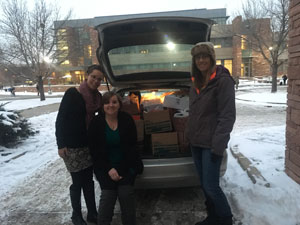
Thank you to everyone who donated to our MIP Adopt a Family! As the photo above documents, we received a literal ‘car load’ of donated presents for five local families in need. This is the ninth year in a row that the Department has banded together to help area families during the holiday season. A big THANK YOU and HAPPY HOLIDAYS to all!!!!
MIP is Well-Represented at the Annual ACVP Meeting in New Orleans
The joint ACVP/ASVCP meeting took place Dec. 3-7 in balmy New Orleans.
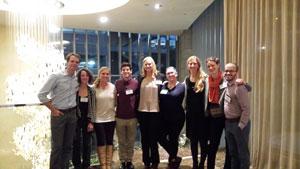
Veterinary Students at ACVP 2016

All work and no Karaoke would make for one stressful meeting!
Notable Awards

Liz Goldsmith won first place in the Experimental Disease category of the Student Poster Competition for her poster entitled: Cell-intrinsic and environmental factors contribute to sex-specific differences in the CD8+ T cell response to infection
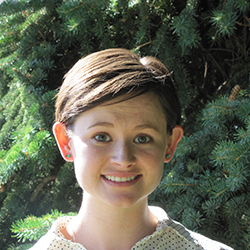
Caitlyn Martinez won an ASVCP Travel Award for her abstract.
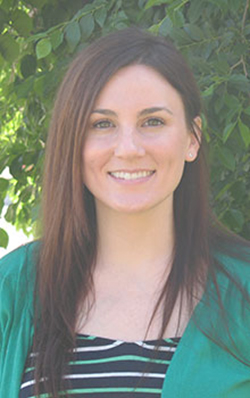
Lauren Radakovich was awarded the Harold W. Casey Scholarship intended to recognize outstanding individuals training in pathology.
Congrats to all!
We also wish to thank the folks who organized the CSU Alumni Reunion at the Cellar Door on Monday during the meeting.
Everyday Hero Award
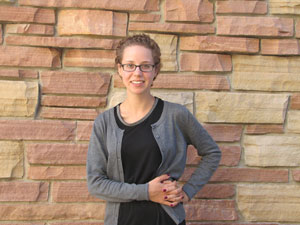
For all of her efforts, Madelein Lopez recently received an ‘Everyday Hero’ Award.
Congrats Madelein!
Carol Blair and Greg Ebel Explore Science and International Politics in Cuba
Greg and Carol recently attended the “Exploring Opportunities for Arbovirus Research Collaboration” organized by NIAID and the Instituto Pedro Kouri at the Hotel Nacional de Cuba. In addition to great science, the meeting started just a couple of days after the death of Fidel Castro (see photo of the crowd gathered at the Plaza de la Revolucion below). In addition, dignitaries from all over the world came for the memorial service and stayed at the hotel. Pictured below are Greg, Carol, George Dimopoulis (a Johns Hopkins scientist) and the Greek Prime Minister Alexis Tsipras.


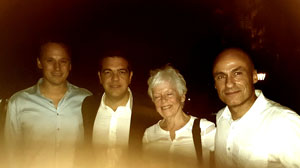
Some Photos to Get You in the Mood to See Rogue One
Some breathtaking photos of the Orion Nebulae (with its baby-blue giant stars called the ‘Trapezium’) and the crescent moon taken by Michael Scherman.

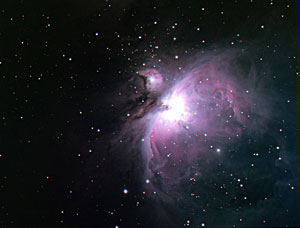

Thanksgiving Potluck 2016
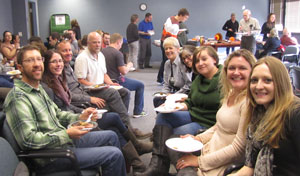
MIP held its well-attended annual Thanksgiving Potluck lunch on November 18th to allow attendees to train for consuming mass quantities of calories over the upcoming holiday season. Check out the photos here.
RIC Stands for 'Ringing In Christmas'
The “BS2” Holiday Lunch* took place at the RIC Building earlier this month. BS2, by the way, stands for Belisle, Slayden, Borlee, Stenglein laboratories.
As seen in the photos below, attendees took on some alter egos from the microbial world and did their best to get their major and minor grooves on……
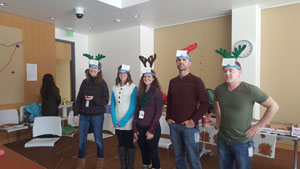
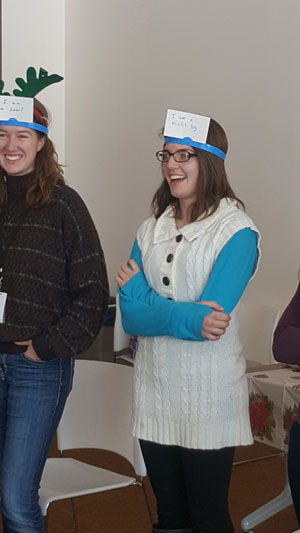 Marylee Layton
Marylee Layton
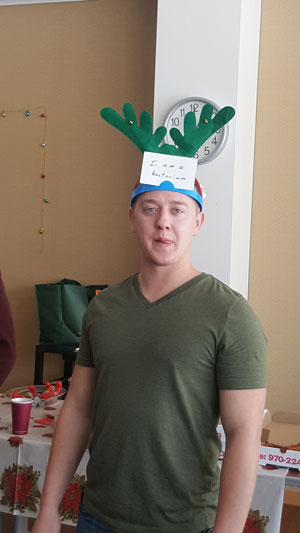
Kevin Martin
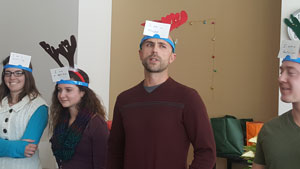
Jason Cummings
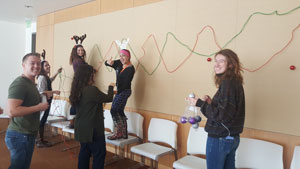
Making Festive DNA
Check out more photos here.
GSO-Sponsored Trip to the Colorado Eagles Hockey Game
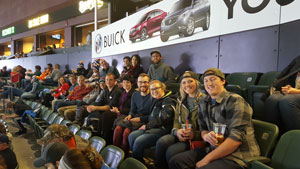
The MIP Grad Student Organization ran a group outing to see the Eagles take on the Idaho Steelheads at the Budweiser Events Center On Dec. 9th. A great time (and a beer or two) were had by all.


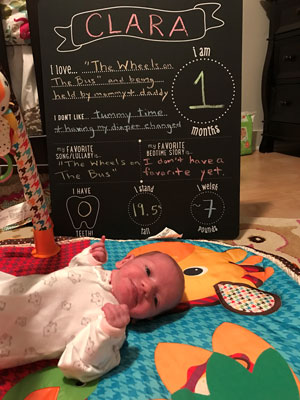
Clara Shilrey Layer was born on November 15th, 2016. Both Emily and her baby are doing fantastic and know all of the words to ‘The Wheels on the Bus……”.
Future Gene Editors from Castle View High School Visits CSU
On Nov 29 a group of eight AP Biology and Futurology students from Castle View High School visited CSU to learn about CRISPR-Cas9 and how it is being used in research and medicine. After an introduction from Carol Wilusz, they toured several labs and chatted with faculty, post-docs and graduate students, all of whom were very impressed with the level of interest and understanding they showed. They learned about a wide range of different projects in organisms ranging from algae, to worms, to mosquitoes as well as human stem cells and humanized mice. Thanks to all those who helped with the visit, especially Shaun Cross (1st yr MIP), Paige Charlins (CMB, Akkina Lab), Claudia Ruechert (Ebel Lab), Bill Black, Denis Jallet and David Xing(Peers Lab, Biology) and Mark Nishimura (BMB).
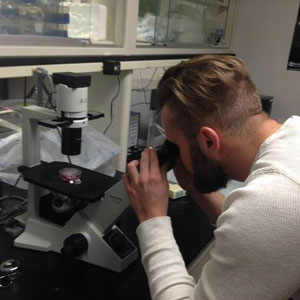
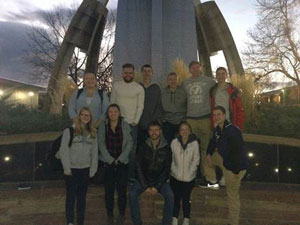

The two most joyous times of the year are Christmas morning and the end of school.
-Alice Cooper
Choose your Caption

A ‘Randy-esque’ sighting was made at a Grad Student-sponsored trip to the Eagles- Idaho Steelheads game on Dec. 9th
Alternative Captions:
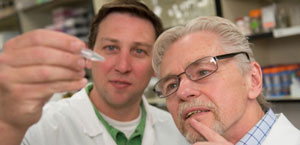
This photo of David Henderson and Ed Hoover was featured in a recent CSU Source article http://source.colostate.edu/csu-team-uses-test-chronic-wasting-disease-study-brain-ailments-people/
What is Ed thinking about in this photo?
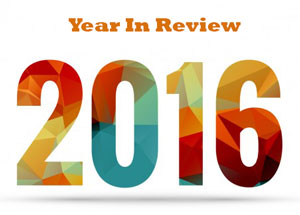 1. MIP researchers published 160 papers in 2016, with nearly 25% of them having multiple MIP faculty authors – a clear indication of that amazing synergy with have among Department research teams. While none of the publications made the NY Times best seller list like Springsteen’s Born to Run book or won a Nobel Prize in literature like Bob Dylan, two MIP pubs ended up generating impressive cover images for Cell Host & Microbe and Prion. Plus neither Bruce nor Bob’s work ever achieved MIPublication of the month status……
1. MIP researchers published 160 papers in 2016, with nearly 25% of them having multiple MIP faculty authors – a clear indication of that amazing synergy with have among Department research teams. While none of the publications made the NY Times best seller list like Springsteen’s Born to Run book or won a Nobel Prize in literature like Bob Dylan, two MIP pubs ended up generating impressive cover images for Cell Host & Microbe and Prion. Plus neither Bruce nor Bob’s work ever achieved MIPublication of the month status……
2. While we hope that the ratification of the Paris global climate agreement by both the US and China will have substantial impact, we also wondered which MIP researchers had the most ‘impact’ in 2016? Using Web of Science, we took the liberty to calculate an ‘impact factor’ (IF) for MIP scientists just like gets calculated for journals (# of citations received in 2016 for papers published in 2014-2015). While this ‘IF’ has its recognized shortcomings, we thought it might at least be interesting to calculate. (Insert drumroll here….). The average ‘impact factor’ of an MIP faculty member in 2016 was 2.6. The faculty leaders (with a minimum of 3 papers published during ’14-’15) were Mark Stenglein (IF = 7.0), Carol Wilusz (6.0), Ian Orme (5.47), and Anne Lenaerts (5.04). An impressive 15 MIP faculty members had an ‘IF’ over 4.0. Congratulations to all and Keep on Publishin’.
3. While Captain America – Civil War led 2016 movies with a worldwide gross of $1,153,304,495, MIP researchers brought in ~40X less than that movie in grant dollars – but still an impressive $26,399,909 for the 2016 fiscal year. To add a little more realistic perspective, that’s nearly $4 million more than the last fiscal year! A 15% increase in grant dollars in the current fiscal funding climate is nothing to shake a pipet at – and a big CONGRATULATIONS goes out to all of the hard working folks who generate the data and dream up the next direction to take the studies.
4. In addition to David Bowie, Prince and Muhammed Ali, by any measure, we said goodbye WAY too many times in 2016. MIP family members Don Klein, Richard Bessen, Jon Carlson and Chuck Hibler all passed away and are sorely, sorely missed. Two MIPers retired, Julie Inamine and Rose Lopez, and faculty members Torsten Eckstein and EJ Ehrhart left for other professional positions. Ch-ch-ch-ch-changes……..
5. The Cubs and Broncos weren’t the only folks who made it to the top of their game in 2016. Three MIP faculty obtained well deserved promotions, including Professor Carol Wilusz and Associate Professors John Spencer and Brian Geiss. In addition, the MIP as a Department had several key achievements as well. We successfully created the ‘IDRN2’ PRSE along with some six-figure funding to support its goals in unifying and expanding infectious disease research at CSU. The Micro MS-B Program graduated its 100th student, pretty impressive considering that the graduate program only just finished its third year. Finally, MIP undergraduates, graduate students, post docs, staff and residents won a plethora of awards for their science that would take up the rest of the space in this column to list. We think MIP really stands for Many Impressive People…..
6. Pokeman Go! wasn’t the only way to find some release from work pressure in 2016. Conferences and parties are definitely part of MIP culture, and this year had some memorable ones. Scientifically we hosted the major Colorado Mycobacterial Conference in the summer and the 16th annual Rocky Mountain Virology Club meeting in the Fall. We had impressive Halloween and Thanksgiving parties, as well as a Spring picnic. MIP Office staff got their Phelps-faces on and held an Office Olympics this summer. The Graduate Student Organization hosted successful group outings to the Rockies and Eagles, and the AIDL ‘Headsquashers’ softball team played so well this year that there was a rumor that PED testing might need to occur next season…..
Congratulations to all on another amazing year in the books. We can’t wait to see what exciting accomplishments the New Year will bring.
News from the World of One Health
One Health Institute Conference in Mexico
The One Health Institute (OHI) recently hosted the ‘One Health in the Americas’ Conference in Todos Santos, BCS, Mexico. You can read more about it here. MIP’s John Spencer wasa in attendance and gave a talk about his leprosy work in the Amazon with his Brazilian colleague Dr. Claudio Salgado. OHI the “world premiere” of a video on this collaboration at the conference (Check out the video).
One Health Institute has a New Website
Check it out at: http://onehealth.colostate.edu/

![]() Is an R21 really easier to get than an R01?
Is an R21 really easier to get than an R01?
According to recently released data on applications received and awards made in FY 2016, NIAID received 2,775 R01 applications and funded 627 of them (for a success rate of 22.6%). NIAID received 2,496 R21 applications and funded 577 of them (for a success rate of 23.1%). The bottom line: there’s not much difference in your overall chances of nailing an NIH grant whether you choose to go for an R01 or an R21. Thus it is recommended that you decide what type of application to file solely based on the scope of your project.
![]() NIAID Systems Biology for Infectious Diseases Research Program
NIAID Systems Biology for Infectious Diseases Research Program
Here’s a U19-based new funding opportunity announcement that might be right up the alley for a group of researchers interested in generating and integrating large data sets into maps of host-pathogen interaction networks. There is a Feb 15 deadline for optional letter of intent and a March 15 application submission deadline. Check it out at https://grants.nih.gov/grants/guide/rfa-files/RFA-AI-16-080.html
![]() Administrative Supplements to help cover recent increases in postdoctoral stipends
Administrative Supplements to help cover recent increases in postdoctoral stipends
If your research grants are affected by the recent NIH stipend increase that took effect on Dec. 1, you may want to check this out: http://grants.nih.gov/grants/guide/notice-files/NOT-OD-17-002.html
![]() The end of rolling submissions for Zika R21 grant applications
The end of rolling submissions for Zika R21 grant applications
NIH is expected to issue an FOA shortly that will end rolling submissions and instead use standard R21 target deadlines for Zika virus-targeted R21 applications. Check it out at http://grants.nih.gov/grants/guide/notice-files/NOT-HD-16-033.html
New Grant Awards
Ann Avery, "Genetic Risk Factors for Canine T Zone Lymphoma", Canine Health Foundation, Inc.
John Belisle, "BMAC CSU Core Facility Mass Spectrometry Services", HHS-CDC-Centers for Disease Control.
Brad Borlee, "Burkholderia Pseudomallei Library Copy Preparation", American Type Culture Collection.
Greg Ebel, "Mosquito Transmission Potential of Dengue Virus Vaccine Cand", Chemo-Sero-Therapeutic Research Institute.
Angelo Izzo, "TO A80 Task, Advanced Small Animal Models for the Testing of Candidate Preventive Intervention Against Mycobacteria", HHS-NIH-NIAID-Allergy and Infect Diseases. "Advanced Small Animal Models for the Testing of Candidate Preventive Intervention Against Mycobacteria", HHS-NIH-NIAID-Allergy and Infect Diseases.
Rebecca Kading, " Virus-Vector Studies with V920, Recombinant Vesicular Stomatitis-Zaire Ebolavirus (rVSV-ZEBOV) Vaccine,", BioProtection Systems, Corp.
Diane Ordway, " Identification of New Therapeutic Compounds Against Nontuberculosis Mycobacterial Species", Global Alliance for Tuberculosis Drug Development.
Glenn Telling, " Harvesting of Transgenic Mice Brains", Sustainable Agriculture & Wildlife Corp., LLC.
| Mon | Tue | Wed | Thur | Fri |
| 2
Univ. Holiday |
3
|
4 |
5 |
6 |
| 9
|
10
|
11 | 12
MIP Faculty Retreat |
13
MIP Employee Recognition Event |
| 16
MLK Holiday
|
17
Spring Semester begins |
18
|
19
|
20
|
| 23 | 24 | 25 | 26 | 27
|
| 30
|
31 |
|
Do you have NEWS or PICTURES you would like to share?
Send In your ideas or newsworthy items. Contributions make the Newsletter better!